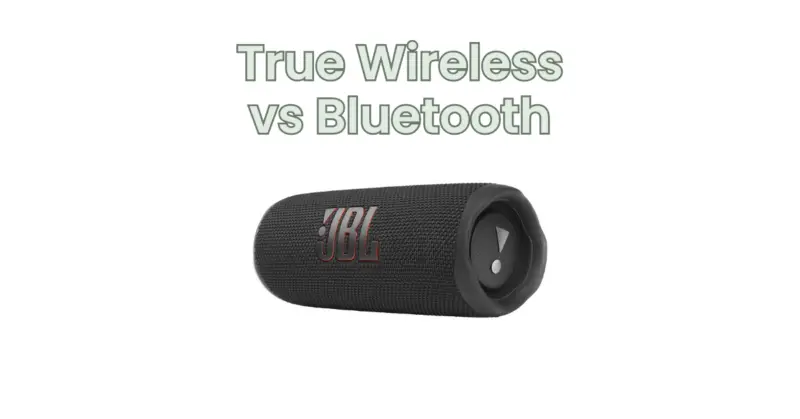In the world of wireless audio, two popular technologies have gained significant attention: True Wireless and Bluetooth. Both offer wireless connectivity for audio devices, but they differ in terms of their functionality, design, and usage. Understanding the difference between True Wireless and Bluetooth can help you make an informed decision when choosing the right wireless audio solution for your needs. In this article, we will explore the characteristics and features of True Wireless and Bluetooth technologies.
Bluetooth: Bluetooth is a wireless communication standard that enables short-range data and audio transmission between devices. It has been widely adopted in various audio devices, including headphones, speakers, and car audio systems. Bluetooth allows for the wireless streaming of audio from a source device, such as a smartphone or tablet, to a receiving device, such as headphones or speakers.
Key Features of Bluetooth:
- Connectivity Range: Bluetooth typically offers a connectivity range of up to 10 meters (approximately 33 feet), depending on the version and class of Bluetooth technology.
- Pairing: Bluetooth devices need to be paired manually by initiating the pairing process on both the source and receiving devices. Once paired, the devices can automatically connect to each other when they are in range and Bluetooth is enabled.
- Battery Life: The battery life of Bluetooth devices varies depending on factors such as usage, device type, and battery capacity. Bluetooth headphones, for example, typically offer several hours of playback time on a single charge.
- Multi-Device Connection: Bluetooth allows for connecting multiple devices simultaneously, such as connecting a smartphone to both headphones and a speaker.
True Wireless: True Wireless refers to a specific type of wireless audio technology that eliminates the need for any physical wires or cables between the audio source and the earbuds or headphones. In a True Wireless setup, each earbud or headphone operates independently without the need for a physical connection to each other or a separate audio source.
Key Features of True Wireless:
- Independent Earbuds: True Wireless earbuds or headphones consist of two separate units, one for each ear, which can function independently. Each earbud connects directly to the audio source, providing a truly wireless experience.
- Design and Fit: True Wireless earbuds come in various designs, including in-ear, on-ear, or over-ear options. They are typically compact, lightweight, and designed for a secure and comfortable fit.
- Charging Case: True Wireless earbuds often come with a portable charging case that doubles as a storage case. The case provides additional battery life and convenient charging on the go.
- Bluetooth Connectivity: True Wireless earbuds use Bluetooth technology to connect to audio sources such as smartphones, tablets, or computers. They offer the same Bluetooth connectivity features as traditional Bluetooth devices.
- Battery Life: The battery life of True Wireless earbuds varies depending on the brand and model. Typically, the earbuds themselves provide a few hours of playback time, and the charging case extends the battery life by offering multiple charges on the go.
Which is Right for You? Choosing between True Wireless and Bluetooth depends on your specific needs and preferences. Consider the following factors:
- Convenience: True Wireless offers the ultimate convenience with no wires or cables, providing freedom of movement and a minimalist design. Bluetooth devices, while wireless, still have a cable connecting the earbuds or headphones.
- Usage: If you primarily use your audio device for activities that require mobility and portability, such as workouts or commuting, True Wireless may be the better option. Bluetooth devices are versatile and can be used in various settings.
- Audio Quality: Both True Wireless and Bluetooth devices can deliver high-quality audio, but True Wireless earbuds may offer a more immersive listening experience due to their close proximity to the ear.
- Battery Life: Consider the battery life of the devices and charging convenience. If you require longer playback time without the need for frequent charging, Bluetooth devices with larger battery capacities may be preferable.
- Budget: True Wireless earbuds tend to be more expensive compared to Bluetooth devices due to their advanced technology and additional features.
Ultimately, the choice between True Wireless and Bluetooth depends on your priorities, preferences, and how you intend to use your wireless audio device. Consider the features, advantages, and limitations of each technology to find the best fit for your needs.


